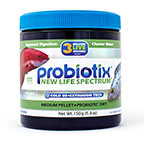
Additional locales and sizes may be available!
Additional locales and sizes may be available! Email me when availableQuick Stats
What do these Quick Stats mean? Click here for more information
What do these Quick Stats mean? Click here for more information
Overview
Like other members of the Gymnotiformes order, Glass Knifefish have a well-developed weak electrical organ that helps these nocturnal fish maneuver the dark waters of their South American homeland. Members of the scientific community have even used Glass Knifefish to study human neurology.
In the home aquarium, however, observation of this non-aggressive fish is equally rewarding. Also known as Green Knifefish, due to their slight green hue, these fish thrive in large, well-planted aquariums decorated with a variety of hiding places within rockwork and plants. They also prefer dim lights, so use more subdued lighting or offer cover with floating aquarium plants. Since these fish are very social amongst their own species, it is best to keep more than one together in the aquarium.
Breeding fish lay their eggs in plants. However, if you want the fry to be raised successfully, either they or the parents need to be removed to a separate aquarium. Breeding in the home aquarium can be difficult because one needs to stimulate the rainy season to encourage spawning.
Feed these omnivores a varied diet of live and frozen foods, including pellets, flakes, tubifex, shrimp, and mosquito larvae.
Approximate Purchase Size: 3" to 5"










